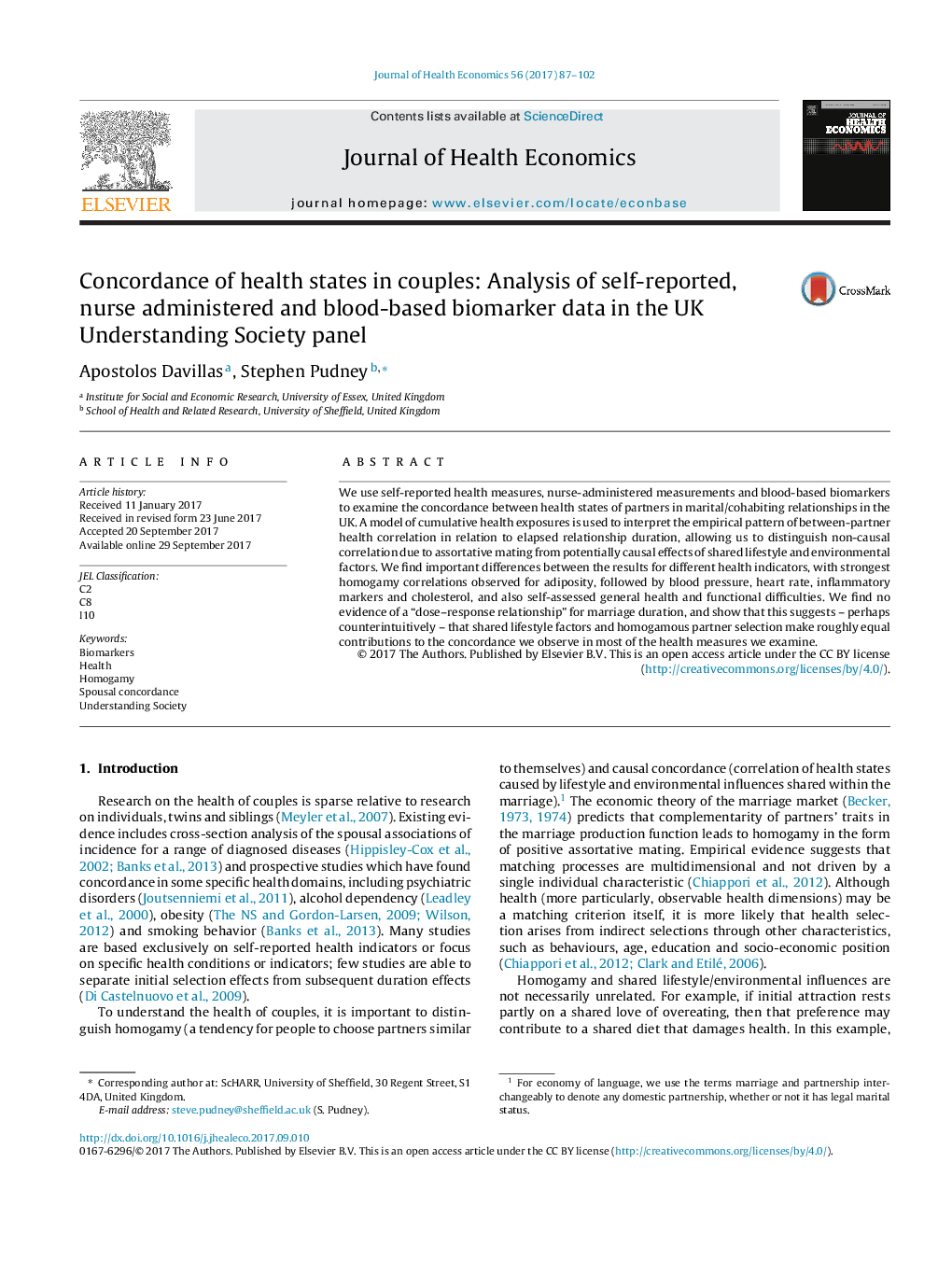| Article ID | Journal | Published Year | Pages | File Type |
|---|---|---|---|---|
| 5100715 | Journal of Health Economics | 2017 | 16 Pages |
Abstract
We use self-reported health measures, nurse-administered measurements and blood-based biomarkers to examine the concordance between health states of partners in marital/cohabiting relationships in the UK. A model of cumulative health exposures is used to interpret the empirical pattern of between-partner health correlation in relation to elapsed relationship duration, allowing us to distinguish non-causal correlation due to assortative mating from potentially causal effects of shared lifestyle and environmental factors. We find important differences between the results for different health indicators, with strongest homogamy correlations observed for adiposity, followed by blood pressure, heart rate, inflammatory markers and cholesterol, and also self-assessed general health and functional difficulties. We find no evidence of a “dose-response relationship” for marriage duration, and show that this suggests - perhaps counterintuitively - that shared lifestyle factors and homogamous partner selection make roughly equal contributions to the concordance we observe in most of the health measures we examine.
Related Topics
Health Sciences
Medicine and Dentistry
Public Health and Health Policy
Authors
Apostolos Davillas, Stephen Pudney,
